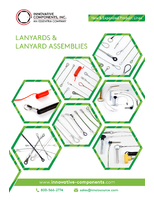NIST summarizes conclusions of photovoltaic workshop.
Share:
Press Release Summary:
NIST's publication, Foundations for Innovation: Photovoltaic Technologies for the 21st Century, summarizes conclusions from a 2010 special workshop. During workshop, participants discussed priority challenges for the 4 dominant photovoltaic technologies and defined critical milestones on the path to solutions. Challenges range from reaching a better scientific understanding of devices themselves to developing practical engineering data for determining optimal use of photovoltaics.
Original Press Release:
Solar Cell Technology Opportunities: Looking to a Bright, Sunny Future
What are the major technology challenges to future growth in the solar-cell industry? Where are the big-bang-for-the-buck R&D investment opportunities? These and other questions were put to a group of 72 internationally recognized experts in the field at a 2010 special workshop. Their conclusions are summarized in a new National Institute of Standards and Technology (NIST) publication on Photovoltaic Technologies for the 21st Century.
The workshop was led by a steering committee chaired by Roger G. Little, CEO, Spire Corporation, and Robert W. Collins, NEG Endowed Chair of Silicate and Materials Science, University of Toledo, and co-sponsored by NIST.
Photovoltaics-the generation of electric power by direct conversion of sunlight using "solar cells"-is a rapidly growing field. Conservative estimates predict a worldwide annual photovoltaic manufacturing capacity of 200 gigawatts (GW) by 2020. For comparison, the current global generating capacity for commercial nuclear power plants is estimated to be 377 GW*. The United States currently has 8 percent of the manufacturing share of this market, but there are opportunities to double that or better, particularly through technological advances, according to the workshop report.
Workshop participants from industry, academia and government discussed the "Priority Challenges" for the four dominant photovoltaic technologies-crystalline silicon-based wafers, amorphous silicon and polycrystalline thin films, III-V multijunctions (a presently expensive but highly efficient technology that was first used in space applications), and more experimental excitonic and quantum-structured based technologies-and defined critical milestones on the path to solutions. Challenges range from reaching a better scientific understanding of the devices themselves to developing practical engineering data for determining optimal use of photovoltaics. Key questions include how can we simultaneously increase manufacturing yields, quality and performance of photovoltaic products; how can we better predict a solar cell's expected useful life and what are the connections between the properties of specific components and the performance of a final device; and how can we exploit this understanding to produce cheaper, more reliable and higher energy efficiency devices.
Recognizing that it's not all up to the researchers, the workshop also noted several institutional or policy-related issues for solar power, including increased availability of raw materials; better understanding and control of environmental impacts for the entire life-cycle of a photovoltaic installation; regulatory and tax policies that may needlessly hamper the growth of the market; and the need for better consumer information.
The new publication, Foundations for Innovation: Photovoltaic Technologies for the 21st Century, is available online at events.energetics.com/NISTGrandChallenges2010/pdfs/Opps_Solar_PV_web.pdf. The 32-page document summarizes for policy makers a considerably more detailed workshop report issued last year, Workshop Report: Grand Challenges for Advanced Photovoltaic Technologies and Measurements**.
* Estimate by the World Nuclear Association.
** Available at events.energetics.com/NISTGrandChallenges2010/pdfs/AdvPV_WorkshopReport.pdf. Additional documents from the May 2010, workshop are available at http://events.energetics.com/NISTGrandChallenges2010/downloads.html.




